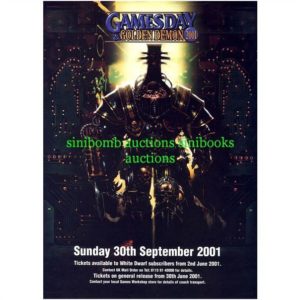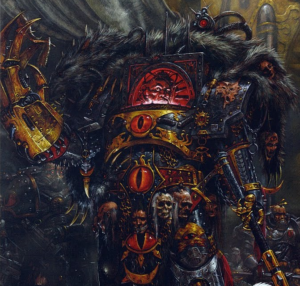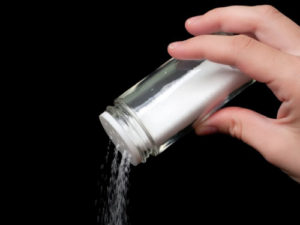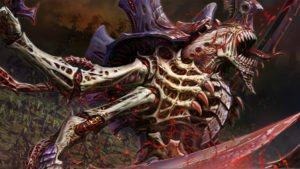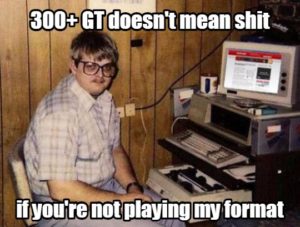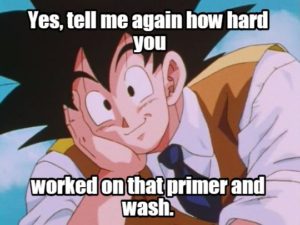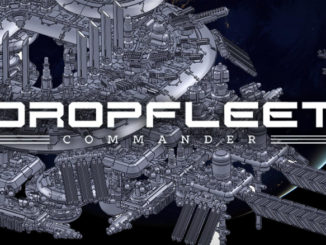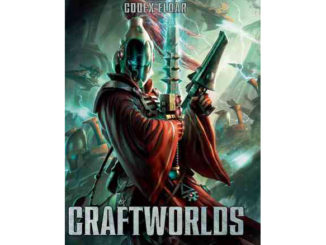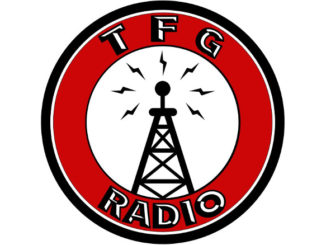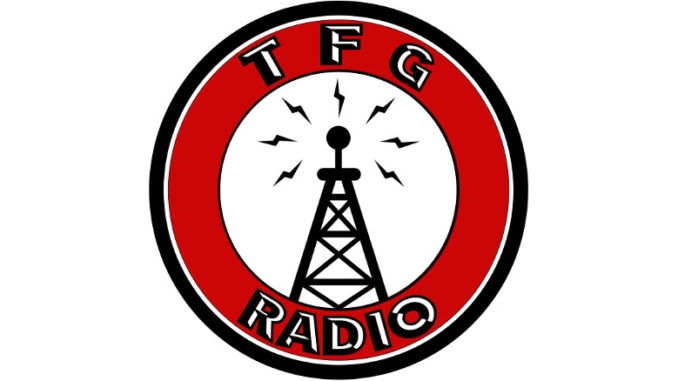
Hey all, Travis, Adam, Salty John, and Danny here to offer you a somewhat moderated conversation that we at TFG Radio had not too long ago: What is a GT and what makes them such?
Just to start it off, we defined a Grand Tournament as a marquee event, a major proving ground where the best of the best congregate to establish their “l33t” skills. The term is a hand-me-down from when GW used to run events, and most major cities would have a GT that would attract everyone is a wide radius. GTs were the first major events, and back in the days of myth and legend (Adam’s youth), there were only a handful of these GTs a year and even fewer independent CON style tournaments.
Today, there is just about a GT every weekend, somewhere. Especially during summer, if you are a traveling 40K player, you could reasonably visit a new city every weekend and play in what is billed as a GT-level event. But is it?
This is the question that Adam asked, and quite frankly, it brought out some interesting perspectives.
On one hand (Adam), the explosion of GTs has actually diluted their appeal and prestige. In the bad old days, to say that you won a major award at a GT was akin to meeting a Primarch; you were truly a demigod amongst mortals. Winning the Los Angeles or the Baltimore GT meant that you were one of the greats, and winning best painted there? You were a serious contender for Golden Daemon. There was mad respect, and since there were so few of these events, you could be assured that the competition was as tough as it comes.
Now with 40+ GT level events each year (just ITC, not even including other formats/CONs), you have a whole host of players that claim the GT throne, but did they truly play against the best? If you have a GT that attracted 35 players, mostly just from the local area and slightly beyond, can you claim to be truly elite? Let’s be real: does a 30-man GT in Bumblewhat, Nebraska, equal the same level of player skill as an 80+ GT in a major metropolitan center like Chicago, DC, or even a smaller city like Sacramento? It could certainly be argued that the rise of internet TFG posters who claim “they are the best” and “I’ve won tons of GTs” with some bad, janky, and/or blatantly not correct armies is the result of some many smaller events now calling themselves GTs.
Let’s also not forget that there was a higher barrier of entry into a GT, namely a fully painted army (and in the old days, the GW judges/TOs were not shy about sending an army back that was just primed three colors), and since GW ran it, GW models were required, so no proxies, alternative company sculpts, or and all the other means that we have now to create lists that would have been prohibitive before. This meant that if you took an army to a GT, it was YOUR army. You built it; you played it; you fucking loved it because you invested way too much money and time into it. Armies were not just flavors of the month, built, played, and sold like a cheap sexbot. There is a certain pride and sense of worth in that system that we may have lost now with the glut of GTs where nobody cares if your Chaos Spawn are actually Spawn or if your zombies come from a board game.
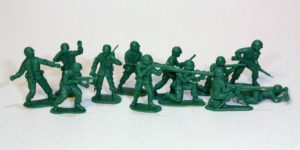
Even now, what are our a standard-bearer events? The LVO is the most attended. NOVA has the invitational. Adepticon is one of the oldest. How do we establish what the true heights of the competitive side are? How can anyone claim true skill when with enough practice, a tuned list, and a lot of plane trips, a lot of players could earn a “GT win”.
In short: Less GTs, more strident requirements, more dignity.
Of course, there are counters to all of this (John). The first and foremost is that the explosion of GTs is inherently good for the game and the players because finally, anybody can go to a GT. If you didn’t live in or near one of the GW GT cities, you had to drop a lot of money to go, and for the most part, players on the West Coast were screwed for a while as most of the big CON GTs were on the East Coast. The increase in major events has democratized the Grand Tournament, allowing anybody with enough people, room, and terrain to have a larger style event and get some games in. Any local meta could grow and prosper because it has become easy to publicize and attract more players with a more prestigious event. A local RTT still doesn’t have the same draw as something labeled a GT, so even a small 30 man GT could still be growing a community where the RTTs draw only 12 or so.
The increase in players also increases the variety of the meta as more and more players, isolated from the larger meta, can start to participate and bring in new list ideas that could challenge the conventional wisdom. By having more people play, you are going to see more diversity in armies and army builds, which is part of what makes the hobby enjoyable. One of the reasons so many Warmachine players dropped out at the tail end of MK II was the simple fact that you saw the same lists every event. It became boring. By having more players who bring different toys, the game in the larger sense stays fresher. Let’s also be honest: winning a 30 man tournament is still not easy and it deserves a bit of recognition, and it is easy to tell what the “majors” are: Tournaments with 100+ players.

The new influx of GTs also brings out a lot more opportunities for non-competitive play, oddly enough. The largest CON style events now have robust narrative play, friendly and/or heavily comped tournaments, and silly things like the Knight Joust. This is all good as competitive isn’t the only way to play this game, and so it exposes all players to a larger pool of people to meet. Of course, even the competitive only minded GTs still don’t necessarily offer the same heat as the larger ones, so a more casual player can dip their toes into the competitive world and have fun doing it.
Also, since GW is no longer the driving force behind these events, it does allow players to build armies using other models that they couldn’t do previously. Let’s be real: enforcing a pay wall on the game sucks, and it only alienates players who don’t have the disposable income to build any list that they want. Yes, this is a hobby, but it is still expensive, and begrudging someone their honest attempts to make it more affordable is just being a jerk. Yes, just using bases with LEGOS on them is not cool, but using cheaper but still viable models from another company is not the same thing, and trying to draw that distinction is intellectually lazy at best and outright douchebaggery at worst.
More GTs is a good thing.
On the other, other hand (Danny), more GTs does make it difficult to establish a common line and standard of measurement for skill and meta. The ITC has done a lot to help bring many, many players together in one common format where the rankings do matter as the players are competing in similar circumstances and of course, points are influenced by the size of the event, so you are getting some good, honest data about who is winning and how. The problem is that there are still quite a few bigger events (and smaller ones) that are completely different than ITC, and the metas are quite different. It seems obvious to me that most American players don’t do well in the ETC because it is such a radically different meta and really, a different game as some of the fundamentals are so different than if you play NOVA or ITC.
While the best players can navigate through the different formats, the fact that there are some many different formats makes it far more difficult to argue who is a good player and what is a good list because it all becomes dependent on the format itself. Battle-Company is strong in ITC but weak in NOVA (unheard of in ETC) while Deathstars are super dominant in NOVA/ETC and a bit more subdued (but still really good) in ITC. All of this just makes it harder for players to travel between events, and really, we may have many more GTs, but we are also starting to subdivide ourselves more and more based on what format allegiance we have. Even now, in the dark corners of the internet, you see comments like “winning X doesn’t count because they use Y format”.
So yes, more GTs opens up access to a lot of players, but we are also seeing a larger push to try and subdivide players based on format. Enforcing more strident painting requirements demonstrates more commitment to the game, but it also keeps out newer/younger players who haven’t had the time/skill to really get their army GT ready. If nothing else, ensuring that RTTs remain fully inclusive, even with bare plastic, is an important step to getting newer players into the scene and keeping them.
Keep RTTs inclusive, but we really need a unified measuring rubric for the competitive community.
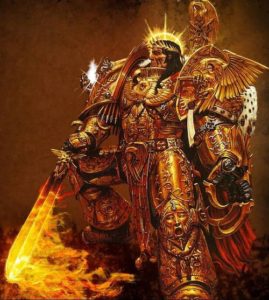
On the last hand (Travis), inclusion is important to the 40K community. The reality is that there are plenty of areas that cannot reasonably gather 50+ players for an event, so what incentive do they have to even try if we suddenly put down a limitation that GTs need to be at minimum 50 people? This will just stop smaller groups from taking the next step to grow their community by offering a larger regional event. Consolidating into less GTs just puts more of a burden on people who don’t happen to live near any of the major events, and it just means less people playing 40K.
There is room to better classify events though. A “local” event could be defined by 8-31 people with 3 rounds, a “Regional GT” could be 32-63 players, 4 or more rounds, with or without a cut, and then a “Major GT” could be 64+ with minimum 5 rounds. This still allows smaller areas to bill themselves as a GT and grow their player base while also giving them the opportunity to grow into something larger. Small events cannot become big events if people aren’t willing to try something new, and so we should be encouraging more events, not less.
Of course, ITC/NOVA/Whoever could definitely do more to up the requirements of tournaments, particularly GT level and above. Fully painted should be mandatory at this point, not just for prize support but for participation. At a large event with plenty of time to prepare with a lot of warning, a player should be able to reasonably complete an army. As mentioned before, it sucks to spend time and money to travel to an event to get stomped by the bare-plastic and some primer army. Larger events should also be enforcing some basic preparation by players like printed lists for TOs and organizers and not accept any of this hand-written BS. This also includes bringing your codex/rulebook/materials and not just a PDF on your friend’s phone. These kind of small details make a larger event run smoother but also just create a stronger and more engaged atmosphere. A GT level event shouldn’t feel like just a big RTT.
Finally, we have to be careful about trying to have a pseudo-professional 40K circuit where only select players compete for larger prizes and prestige. This just creates a degenerate meta where people are even more inclined and incentivized to be TFGs, and because they are the supposed “elite” players, that mindset will influence other players. You need only look at competitive Magic to see how a specific meta is created and enforced, but more importantly, you can see how this meta trickles down quickly to the casual environment where people Netlist like crazy. This is a Hobby (emphasis on the capital H), and trying to treat it like a competitive sport is ultimately harmful to the larger 40K community.
More GTs, more requirements on the big ones.
Really, the question boils down to “how we want 40K to grow?”. Do you we want a more inclusive, open-ended event where everyone gets a chance to play in a GT, or do we try to go back to the older days where there only a few real events, and these carried a level of prestige and respect that is hard to find nowadays? So, let us know your thoughts. More GTs? Less GTs? More painting requirements? Less?
Also, seeing as we try to bring a high level of professionalism, check out our Patreon to help us deliver even more high-quality content!

